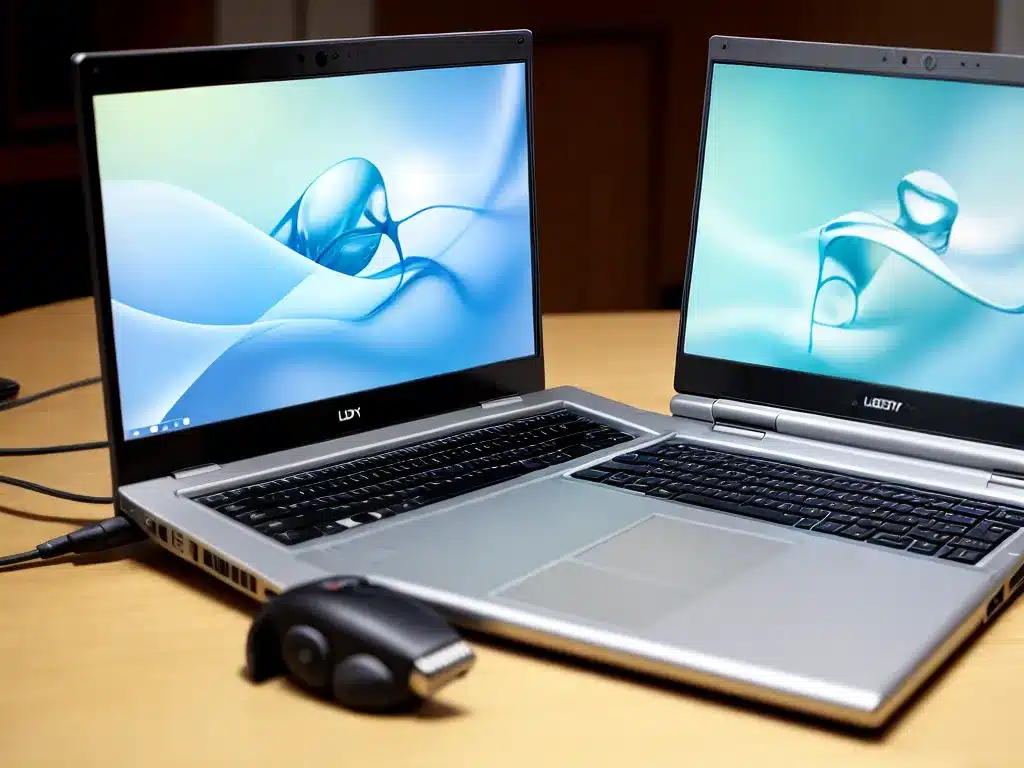
As our laptops age and technology advances, it’s only natural to start feeling like your trusty old machine is slowing down and showing its age. However, before you decide to invest in a new laptop, there are many things you can try to squeeze more life out of your current one. With a few software updates, hardware upgrades, and routine maintenance, you can keep your old laptop running smoothly for years to come.
Clean Up Your Hard Drive
One of the easiest ways to instantly improve performance is by freeing up hard drive space. The less cluttered your hard drive, the faster your laptop can access files and programs.
Here are a few tips to clean up space:
-
Uninstall unused programs – Programs you never use just take up space and slow things down. Go through Add/Remove Programs and get rid of anything you don’t need.
-
Clear browser cache – Web browser cache and history can build up over time. Clear it out regularly.
-
Remove temporary files – Your computer saves tons of temporary files that are safe to delete. Use the Disk Cleanup utility.
-
Back up photos and files – Store your biggest space hogs (photos, videos, music) on an external hard drive or the cloud.
-
Delete restore points – Old system restore points can take up many GBs. Delete all but the most recent.
Freeing up at least 10-20% of your hard drive can have a big impact on your laptop’s performance.
Add More RAM
One of the best hardware upgrades you can make is to add more RAM (random access memory). Having more RAM allows your computer to run more programs and browser tabs simultaneously without slowing down.
For most older laptops, you can upgrade from 2GB to 4GB of RAM fairly cheaply. Some newer machines can even handle 8GB or 16GB. Check your manual or Crucial’s Advisor tool to see how much RAM your laptop can handle, then head to Amazon or Newegg to find a compatible RAM stick.
Installing RAM yourself is a simple process, just pop open the access panel on the bottom and slot in the new stick. Make sure to ground yourself first!
Replace the Hard Drive
If your hard drive is getting full or slowing down, consider replacing it with a solid state drive (SSD). An SSD is much faster than a traditional hard disk drive, which relies on moving mechanical parts.
Cloning your existing drive over to an SSD will make your operating system and programs launch faster. Look for a 2.5″ SATA III SSD around the same capacity as your current drive. Samsung and Crucial make excellent and reliable SSDs.
Upgrade to an SSD/HDD Hybrid
Another option is to get a hybrid hard drive, which combines an SSD with a traditional hard disk drive. The SSD stores your operating system and frequently used programs, while documents and media are saved to the hard disk.
Popular options like the Seagate FireCuda offer speed boosts over traditional HDDs while being more affordable than a full SSD replacement. They’re a nice middle-ground upgrade.
Add More Storage
If you need more storage space but don’t want to replace your main hard drive, consider picking up an external USB hard drive. Portable drives from Seagate, WD, and others plug right into your USB port for easy extra space.
For frequent travelers, wireless portable drives like the WD My Passport Wireless allow you to bring your files and media anywhere without any cables. Very handy!
Perform Regular Maintenance
One of the best things you can do to keep your laptop running smoothly is perform regular system maintenance. Here are some tips:
-
Update software – Keep Windows, drivers, browser, and other software updated. Old versions have vulnerabilities.
-
Scan for malware – Run scans with Windows Defender or Malwarebytes to remove anything malicious. Even brand new malware-infected laptops can run slowly.
-
Clean out vents – Use compressed air to remove dust buildup in vents and fans to prevent overheating.
-
Restart regularly – Don’t just sleep/hibernate for weeks on end. The restart flushes memory leaks.
-
Replace battery – Batteries degrade over time. When it won’t hold a charge, replace it with a new one.
following this basic maintenance will keep your laptop running in tip-top shape.
Summary
-
Clean up hard drive space by removing unused programs, files, browser cache, and more.
-
Upgrade RAM – Adding more memory lets your laptop multitask better.
-
Replace your hard drive or upgrade to a hybrid SSD/HDD.
-
Add external or wireless storage if you need more space.
-
Perform regular maintenance like software updates, malware scans, dust removal, restarts, and battery replacement.
With a little bit of effort, you can keep your trusty old laptop running smoothly for several more years. Upgrades and optimizations help your machine work like new again. Before replacing your laptop, try these tips to get the most out of what you already have.












